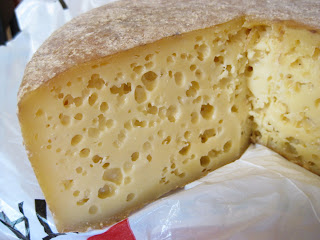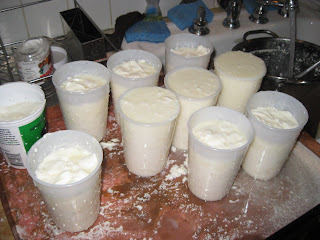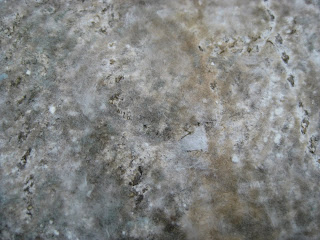
Late July/ beginning August I made my first
Goudas, shown above at about two months old. Underneath is a picture of the cut cheese at three months and it shows lots of holes. Now a Gouda might have a few holes, but this many holes is not typical. The taste, as well as the odor are not typical Gouda.
I suspect, and some professional cheese makers I consulted concur, that the milk I used contained gas forming bacteria. These organisms, called
Clostridium tyrobutyricum, can be in the milk when cows are fed fermented food such as silage. As far as I know, the cows I got the milk from weren't fed this, they were out on pasture. The farmer does feed them some corn during milking time and most likely some of this might have been fermented.
Before cutting the cheese, I already had a suspicion that there might be holes in the cheese. The wheel in the picture above looks swollen which is a sign of gas formation.
Although these cheeses taste nothing like Gouda, they are rather tasteful. One cheese maker mentioned
Tilsit as a comparable cheese. The cheese is sharp and pungent, it reminds myself of some trappist cheeses I have had.



















































